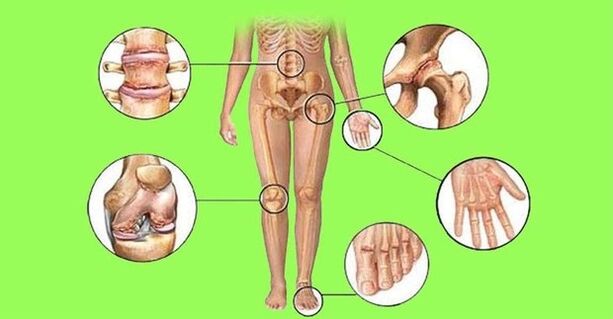What is the difference between rheumatoid diseases? How to detect the problem in time?
Rheumatoid arthritis is a systemic inflammatory disease of the connective tissue, in which the patient affects small joints (elbows, knees, hands and feet) of an erosive-destructive type. The result is bone erosion and its subsequent deformation. Over time, the symptoms of the disease worsen and lead to disability. About 60 million people worldwide suffer from this disease. Diseases are most often affected by women, whose average age ranges from 30 to 35 years.

Rheumatoid arthrosis is a disease that affects the cartilage tissues of the ankle, knee, shoulder, hip and foot joints. The progressive form results in osteoarthritis, which creates restrictions on a person's motor activity. The disease can develop in two symmetrical joints at the same time. Sometimes in several, for example, knee and hip on one limb.
Rheumatoid polyarthritis is a real problem in modern rheumatology. The disease, in addition to the joints, spreads to the internal organs and muscles. The disease develops symmetrically on both arms or legs. Illness often leads to disability.
Rheumatism affects the connective tissue of the cardiovascular and musculoskeletal systems, the joints of the knees, elbows, ankles and the heart itself. Locally, the disease can affect a person's internal organs and systems. The disease needs timely treatment. If this is not done, there will be complications with a fatal outcome.
Main differences
Sick people come to the doctor with complaints of joint discomfort, pain, and reduced mobility. Symptoms of arthritis and osteoarthritis are similar, but there are characteristic differences.
changes in arthritis:
- the synovial membrane with fluid, the joint capsule becomes inflamed;
- heat;
- redness in the painful area;
- two joints hurt at the same time;
- no joint deformity.
Inflammation of the cartilage starts from an infection, injury or a disturbance in the metabolic process.
Physiology of arthrosis:
- modified joint;
- cartilage tissue worn with age;
- inflammation, swelling and redness are not observed;
- normal temperature;
- only one joint was affected.
Diseases bring suffering to a person when performing simple actions: bending, bending, straightening, raising legs or arms. The patient barely sits in a chair, goes down the stairs.
signs and symptoms
Diseases have common symptoms:
- difficulty walking;
- the presence of pain in the inflamed area;
- poor mobility of the problem area.
The usual way of life of a sick person is disturbed. Every morning, getting out of bed, it is necessary to "disperse" in order to go to the kitchen, overcoming the pain.
What's more dangerous
Diseases bring a lot of pain and trouble to the patient.
Arthritis occurs due to inflammation in the body. He is under treatment. It is important to contact a specialist in time and not to wait for bone erosion and other complications.
Osteoarthritis is a "disease of the elderly" with changes within the joint. Worn cartilage thins. Synovial fluid, which is the source of tissue nutrition, is not restored. The consequences of the disease are irreversible. To alleviate a person's condition can be a specialist who will establish a diagnosis and prescribe treatment.
Diagnostics
It consists of carrying out various procedures and activities. During the examination, the doctor learns from the patient with arthritis information about past infections and injuries. Determines the course of the disease and prescribes diagnostics:
- Blood test for uric acid.
- Joint ultrasound.
- X-ray of the affected area.
- CT.
- Arthroscopy.
The results show the complete clinical picture of the disease.
Step-by-step diagnosis of arthrosis:
- Visually, the doctor evaluates the mobility of the joint. Whether or not ossified areas are observed in the problem area, if a creak is heard. In what condition are the muscles around the sore joint?
- Bone growths and joint deformity help see X-rays.
- Analysis and histology of the synovial fluid.
- Blood exam completed.
Physical training
I would like to emphasize that physical therapy, swimming - effectively help in the prevention and treatment of arthrosis. Physical activity is aimed at restoring joint mobility. The increased movement of blood flow to the affected area stimulates the cleansing and restoration of joint tissues.
We must not forget the limitations of physiotherapy exercises:
- It is performed during the period of remission in the absence of severe pain.
- In old age, the existing group of diseases or severe joint degradation does not allow for physical exercises.
- Overweight patients can do a limited amount of exercise without a serious load.
- The effect of physical therapy is regular exercise, alternating with periods of rest for the joint.
Rheumatoid diseases are treated by rheumatologists and orthopedic traumatologists. Early diagnosis and proper treatment will allow you to live without complications. A patient who seeks help in time will have a chance to continue existing normally. With osteoarthritis, this is a relief from the condition, stopping the progress of the disease. And most importantly, don't become disabled.



























